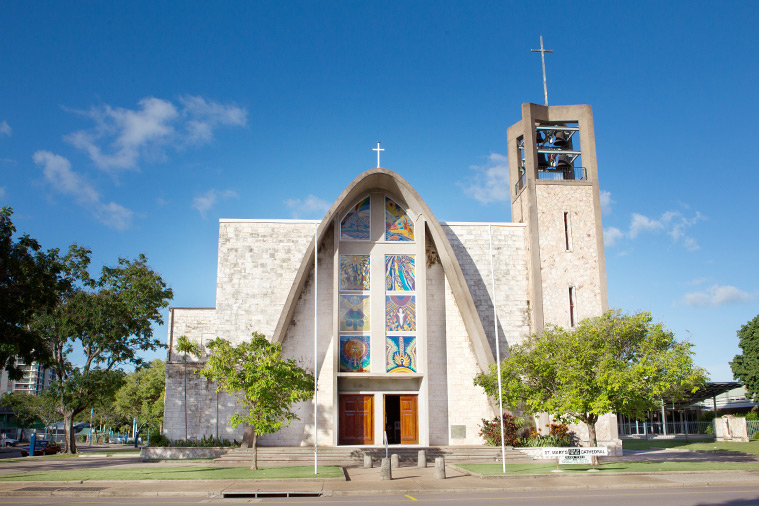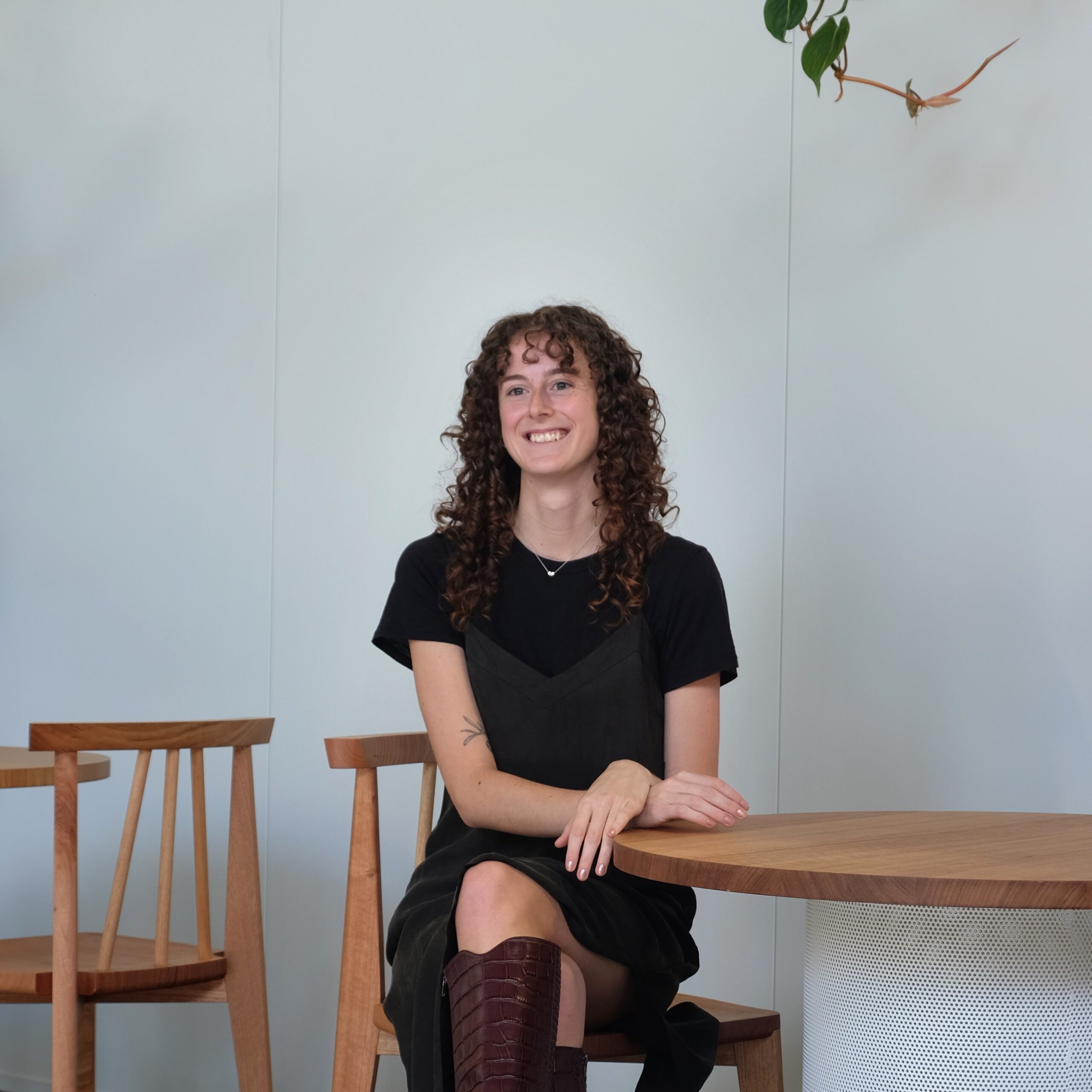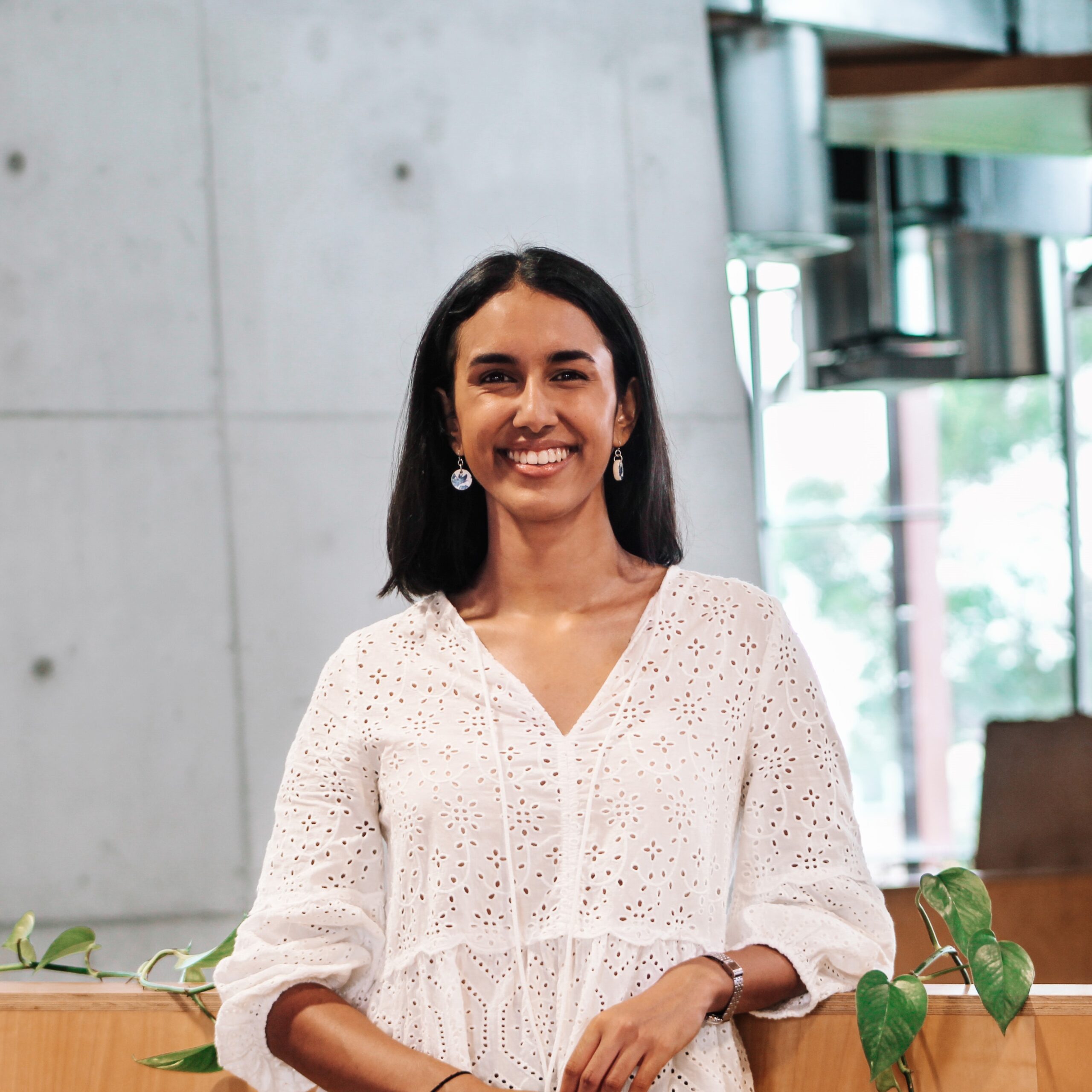Philip Y Bisset
Planning (Architecture)
Scholarship

Philip Y Bisset Planning (Architecture) Scholarship
The 2023 Philip Y Bisset Planning (Architecture) Scholarship has been awarded to Gina Engelhardt and Nicole Mesquita-Mendes. To learn more about both awardees, please visit further down this page or click here.
2024 Applications will open mid-late 2024.
Purpose of the Scholarship
The Philip Y Bisset Planning (Architecture) Scholarship was established as a result of a generous $1,309,613 bequest left to the Australian Institute of Architects by the late Philip Y Bisset. The scholarships are awarded by the Queensland Chapter of the Australian Institute of Architects.
This bequest marks the beginning of a philanthropy strategy for Architectural Education in Queensland that will work to ensure its continued growth and vitality. In turn the bequest will help to foster the highest quality of design for our State’s built environment. The Scholarship will maintain an ongoing educational program that, managed wisely, will see a perpetuity of investment in our young Queensland architects for many years into the future.
The purpose of the Philip Y Bisset Planning (Architecture) Scholarship is to enable final year students to undertake a course of study, research, or other proposed activity approved by the Selection Panel to “study architecture overseas with particular emphasis on the planning and design of buildings”.
Who was Philip Y Bisset?
That Queensland’s post-war baby boomer generation had hospitals in which they could enter the world or go to recover from sickness or accidents had much to do with Philip Yeats Bisset LFRAIA (1921-2010). He was heavily involved in the design of countless hospital buildings around the state, some of which are now heritage listed. Over the years, he was involved with 63 hospitals including the Mater hospitals in Townsville and Bundaberg, St Vincent’s Hospital in Toowoomba and many facilities for the Salvation Army and the federal government. Indeed, in 1946 he was put in charge of the new building at Townsville Base Hospital. At that time it was the largest building project in Australia. That project was quickly followed by the nurses quarters building and both are now on the state’s heritage register. His skill was recognised with a life membership of the state chapter of the Royal Australian Institute of Architects, and he was also an associate of the Royal Institute of British Architects.
Mr Bisset knew he wanted to be an architect from an early age. He studied architecture at the Technical College (now Queensland University of Technology) before joining architect J.P. Donaghue in 1937. J.P. (as he was known to all) took him everywhere in his travels around the state, leaving Philip with many stories to tell about their experiences in the bush.
It was J.P. who arranged for Mr Bisset to be released from army duties so that he could help his boss in his travels around Queensland looking at country hospitals and deciding, in conjunction with the health department and other public service representatives, what would need to be done post-war to meet the needs of a growing population.
After the war the architectural practice grew, later becoming Edwards, Bisset and Partners. The practice also covered schools and religious buildings, including the Roman Catholic cathedral in Darwin – one of the few buildings to escape Cyclone Tracy relatively undamaged.
Mr Bisset was also a qualified town planner, giving him a much broader view than most other architects. Much of his country work was in remote rural communities where he was involved with Australian Estates stock and station agents. A huge challenge in some parts of the state was building on black-soil country, where the earth was constantly moving as the moisture levels changed. Together with structural engineers R.J. McWilliam and Partners, he found solutions to stop buildings in those areas from cracking. One of his most innovative designs was for the new hospital at Cunnamulla in the early 1980s. The steel-framed buildings were split up into sections, much like train carriages, with hinged joints between each section to allow for movement.
Apart from architecture, one of his great passions was travel.

Eligibility
Applicants for the Scholarship must be an enrolled final year architecture student in an accredited Master of Architecture program in Queensland. All applications will be judged on merit.
Application Process
Applications for the Scholarship are made by completing the Application Form. The Application Form requires the following:
- Applicant details
- A statement on the intent, scope, program, itinerary and budget for the proposed Scholarship
- A curriculum vitae of a maximum of 1 page in length
- Nomination of a Mentor. The Mentor may be an individual or a group of individuals from a firm or university, and does not need to be in the architectural profession
- Two referee reports comment on the applicant’s character and the applicant’s capacity to undertake the Scholarship outlined in the application. Referee reports must be submitted as part of the Application Form.
Applications must be submitted by 8.30 am Monday, 13th of November 2023. This is a deadline extension due to Optus Outages affecting some applicants submissions.
Stage 2
Selection Panel reviews applications and shortlists Applicants to be interviewed to discuss their proposed Scholarship program. Proposals will be assessed against the following criteria:
- Significance of the proposed Scholarship program to the design and planning of architecture.
- Feasibility of achieving the aims of the proposed Scholarship program in terms of outcomes, budget and timeframe.
- Ability of the candidate to communicate clearly with a compelling perspective on the proposed Scholarship program.
- Potential of the candidate to collect information an disseminate findings.
Stage 3
If selected for an interview, the Applicant will meet with the Selection Panel to discuss the proposal, the methodology and expected outcomes. Interviews are conducted virtually during November 2023 at a date, time, and location to be confirmed.
Stage 4
Successful Recipients and unsuccessful Applicants will be advised by Friday 17th November 2023. Formal recognition of the Fellowship will take place at the annual Queensland President’s Honours dinner in February 2024.
Stage 5
Successful Recipients shall enter into a Scholarship agreement with the Australian Institute of Architects, commence Scholarship within the following calendar year of the award, and complete it within 12 months.
Stage 6
The Fellowship Recipient must submit a Final Report written in plain English, designed to engage a public audience, of 800 to 1,000 words about the Scholarship. At least five high-resolution images that represent critical aspects of the Scholarship must also be included. The Recipient must hold or obtain consent from the authors of all materials included in the Final Report.
A public presentation event will take place in quarter 3 (Jul-Oct) of the year following the Scholarship being awarded.
Selection Criteria
Applications will be assessed against the following criteria:
- Significance of the proposed Scholarship program to the design and planning of architecture.
- Feasibility of achieving the aims of the proposed Scholarship program in terms of outcomes, budget and timeframe.
- Ability of the candidate to communicate clearly with a compelling perspective on the proposed Scholarship program.
- Potential of the candidate to collect information an disseminate findings.
2023 Selection Panel
The Queensland Chapter of the Australian Institute of Architects appoint the Selection Panel to assess the applications and make a recommendation to the National Executive of the Australian Institute of Architects for the awarding of the Fellowship.
Introducing the 2023 selection panel, Leigh Shutter FRAIA, Associate Professor, Griffith University, Elisabeth Musgrave, FRAIA, Honorary Lecturer, University of Queensland, Jim Gall, FRAIA, Adjunct Professor, Queensland University of Technology, Carly McMahon, RAIA, 2023 Emerging Architect Prize winner (QLD), and Christina Solomon 2017 Bissett Scholarship recipient.
2023 Scholarships
The value of the Scholarship to be awarded to a final year architecture student shall be to a maximum value of $15,000 per Scholarship.
HOW TO APPLY
Please submit your application by completing the form here.
This is submitted via Microsoft Forms. Please note if you are logged into your Microsoft account, you can save your progress before submitting the form.
For more information and to apply contact the Queensland Chapter on qld@architecture.com.au or (07) 3828 4100.
2023 PHILIP Y BISSET PLANNING (ARCHITECTURE) SCHOLARS
In 2023, both Gina Engelhardt and Nicole Mesquita-Mendes were awarded the Philip Y Bisset Planning (Architecture) Scholarship.
Gina Engelhardt
Gina has recently completed her Master of Architecture degree at the University of Queensland. Through her studies, she has honed an interest in climate-just urban design and delved into the relationship between nature and architecture. Her thesis explored the sustainability worldviews of Australian architects, transfiguring these to tell new stories about our hopes for the future. Gina is a co-founder and co-editor of Cannon, the School of Architecture, Design and Planning’s student magazine.

Nicole Mesquita-Mendes
Nicole Mesquita-Mendes is passionate about exploring the role of cities in fostering social cooperation and supporting diversity arising from immigration. Driven by her desire to shape more inclusive cityscapes, Nicole is eager to blend architectural insight with social dynamics and contribute to the ever-evolving narrative of urban environments. Nicole Mesquita-Mendes is currently completing her Master of Architecture and Project Management at Bond University while working at Urbis.

Previous PHILIP Y BISSET PLANNING (ARCHITECTURE) SCHOLARS
2019 Recipients
Madeline John, University of Queensland
Ryan Browne, University of Queensland
2018 Recipients
Claire Bazeley, University of Queensland
Nicholas Russel, University of Queensland
2017 Recipients
Gabriella Avenia Queensland University of Technology
Christina Solomon, University of Queensland
2016 Recipients
Lucinda Smith, University of Queensland
Brittany Hill, Queensland University of Technology
Lauren Hickling, Queensland University of Technology
Contact us
Queensland Chapter
Australian Institute of Architects
2/270 Montague Road
West End, QLD, 4101
P: +61 7 3828 4100
E: qld@architecture.com.au
Office hours: 9.00am – 5.00pm

















